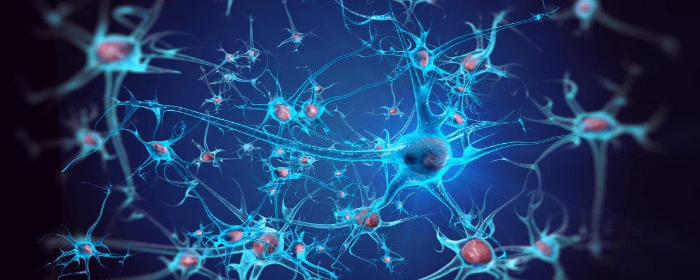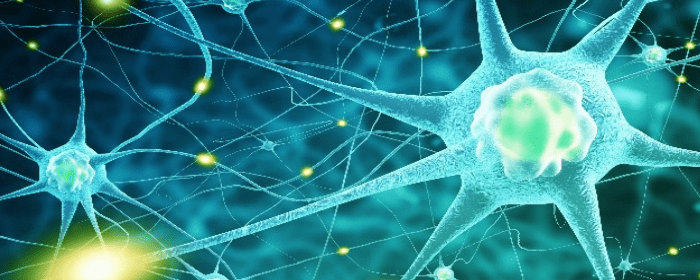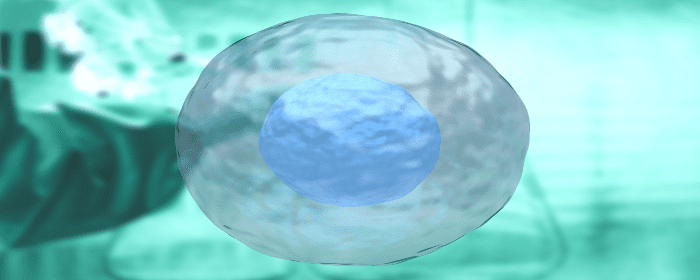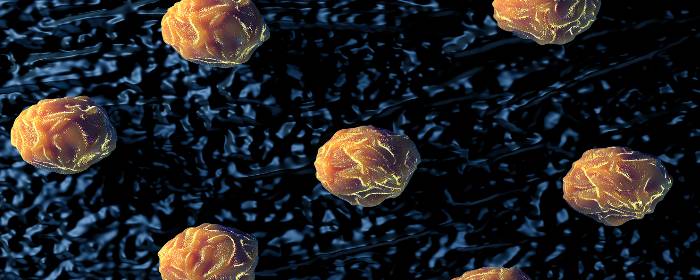
by Stemedix | May 10, 2021 | ALS, Stem Cell Therapy
Amyotrophic lateral sclerosis (ALS), also known as Lou Gehrig’s disease, is a rare disease in which the body’s neurons that control voluntary muscles begin to degenerate. Patients experience muscle weakening and involuntary spasticity, as well as symptoms such as muscle cramps and stiffness, and eventually, difficulty moving, speaking, swallowing, and breathing.
While there is currently no cure for the devastating illness, there are drugs that can increase the quality of life and marginally slow the disease’s progression. Researchers have long been pursuing a more effective treatment for the disease, and efforts were increased significantly as a result of the 2014 viral Ice Bucket Challenge, which raised at least $115 million for research efforts.
Stem Cell Therapy for ALS
One area that’s of particular interest to researchers is regenerative medicine therapy. Also known as stem cell therapy, this option could be a potential treatment for ALS, as it could help sustain and nurture motor neurons that have been compromised by the disease. This is due to stem cells’ ability to release neurotrophic factors, which support and protect nerve cells. This is not a cure, nor a guarantee, but is an option to help slow down the progression of the condition.
Stem cells can be harvested from sources such as the umbilical cord (Wharton’s Jelly), or the patient’s own adipose (fat) tissue, then strategically transplanted at locations such as the spinal canal, intravenous, or muscle tissue. Once in the brain tissues, stem cells have the potential to protect healthy neurons and replace those that have been compromised.
Experts are using stem cells both for research purposes, by creating cells genetically identical to patients to see how they’ll respond to treatments, as well as for treating patients directly. With their protective qualities, the cells can help preserve healthy cells and repair or replace those that have been damaged.
According to results from clinical trials, 87% of patients who received the treatment responded to the treatment with at least 25% improvement and slowed disease progression. Evidence also suggests the treatment is safe and well-tolerated.
While much of how ALS develops remains a mystery, researchers are hopeful that further investigation into stem cell therapy will help to drastically improve treatment outcomes compared to the drugs currently available. If you would like to learn more contact a care coordinator today!

by admin | Oct 6, 2020 | ALS, Stem Cell Research, Stem Cell Therapy
ALS, which stands for amyotrophic lateral sclerosis, is a neurodegenerative disease that has no cure and no substantially effective treatment. Today, there are two drugs available that can slow the progression of ALS— riluzole and edaravone—but these agents may only be modestly effective. Sadly, patients with ALS get progressively worse, sometimes even with treatment. They lose to ability to move, to swallow, and to breathe. It is a devastating disease.
As with other neurodegenerative diseases, researchers are trying to treat ALS with stem cells. Stem cells have the capacity to become other types of cells such as neurons or glia. The notion is that stem cells could be used to rescue and replenish the nerve cells that are dysfunctional or destroyed in ALS. Studies are emerging that suggest that these approaches may bear fruit.
One such stem cell trial comes out of India, published by Dr. Prabhakar and colleagues. The research scientists infused autologous bone marrow-derived stem cells (autologous means the cells were retrieved from the patient and then readministered to the same patient). The scientists conducted the clinical study in ten patients with ALS who had a mean revised ALS Functional Rating Scale score of 30.2 ± 10.58. In other words, patients with this score have about a 60 to 70% chance of being alive for 9 more months.
Impressively, patients treated with autologous bone marrow-derived stem cells did not have a significant reduction in ALS Functional Rating Scale score after one year, which means their disease stayed relatively stable over this time instead of deteriorating. It took about 16.7 months for the score on this scale to drop by 4 points, which is considered a significant drop. The median survival after the procedure was 18.0 months, which is substantially more than would have been expected at the start of the study.
Taken together, these results suggest that patients with moderately severe ALS enjoyed a stabilization of their ALS symptoms for over 16 months on average. While there was no placebo control group, the stem cell-treated patients survived about twice as long as was estimated at the start of the trial.
These positive results must be confirmed in a larger, placebo-controlled trial. However, they strongly argue for further research of stem cells for the treatment of amyotrophic lateral sclerosis.
Reference: Prabhakar S, Marwaha N, Lal V, Sharma RR, Rajan R, Khandelwal N. Autologous bone marrow-derived stem cells in amyotrophic lateral sclerosis: A pilot study. Neurol India 2012;60:465-9

by admin | Jun 24, 2020 | ALS, Stem Cell Research
ALS, also known as amyotrophic lateral sclerosis or Lou Gehrig’s disease, is a progressive neurologic condition. There is no current cure for this condition and the only treatments, riluzole and edaravone, are only modestly effective at slowing the disease.
This lack of a cure or effective treatment for ALS is not for a lack of trying. There have been countless clinical trials to test treatments for ALS—almost all have ended in failure in Phase 1 or Phase 2 clinical trials. Indeed, few potential ALS treatments make it to Phase 3 trials—the final stage of clinical testing before a drug is approved by the FDA for treatment.
It is this history of failure that has sparked so much enthusiasm in a new stem cell treatment for ALS. The potential stem cell treatment for ALS is currently known by its development name, NSI-566. NSI-566 is made up of neural stem cells—cells that can become new motor neurons. NSI-566 is injected into the spinal column of patients with ALS so that the stem cells can hopefully restore motor function and improve ALS symptoms.
The Phase 1 study showed a spinal injection of NSI-566 was safe in ALS patients, a finding that was confirmed in the Phase 2 trial. Perhaps more importantly, results from the Phase 2 trial showed that patients who received stem cell treatment did substantially better 24 months later than those who received a placebo. These results were so encouraging, that NSI-566 now heads to Phase 3 clinical testing.
While it will take some time to conduct the Phase 3 clinical trial, reaching this milestone is an achievement in itself. Any Phase 3 trial design will require a relatively large number of patients, so those who are interested should occasionally check clinicaltrials.gov or speak to your neurologist about enrolling as a volunteer.
Reference: Goutman, S., et al. (2018). Long-term Phase 1/2 intraspinal stem cell transplantation outcomes in ALS. Annals of Clinical and TranslationalNeurology 2018; 5(6): 730–740

by admin | Dec 18, 2019 | ALS, Exosomes, Mesenchymal Stem Cells, Stem Cell Research, Stem Cell Therapy
Amyotrophic lateral sclerosis or ALS is a devastating, progressive neurological disease. While the precise cause is unknown, ALS does destroy nerve cells in the spinal cord, which causes several debilitating symptoms. Often the first symptom of ALS is weakness in the hands or arms that is usually more pronounced on one side of the body. As more spinal cord nerve cells become dysfunctional and die, patients with ALS become weaker, their movements grow slower, and their muscles begin to atrophy (i.e. break down). At the same time, some muscles in the limbs become spastic, which means they are constantly in a contracted state. In later stages of ALS, patients have difficulty swallowing and breathing. Mesenchymal Stem Cell Treatment for ALS is a unique and new option.
The only drug to have any known survival benefit in ALS is riluzole. Patients who take riluzole live longer than those who do not; however, the drug does not improve function or meaningfully reduce symptoms. The only other approved ALS treatment, edaravone, may slow the rate at which ALS gets worse. However, neither of these drugs is a cure—far from it, in fact. Indeed, doctors and patients are left with virtually no effective treatment options for ALS.
Because ALS is caused by the destruction of nerve cells in the spinal cord, the regenerative properties of stem cells may offer a solution. The hypothesis is that stem cells—and exosomes collected from stem cells—can help protect, preserve, or even regenerate cells that are affected by ALS.
A flurry of research has been published over the last decade documenting the safety and possible effectiveness of mesenchymal stem cells for the treatment of ALS. In 2009, Deda et al. showed bone marrow stem cells injected into the spinal area were safe in patients with ALS, even showing that some patients had improvements in neuromuscular testing. The research groups of Karussis, Mazzini, Blanquer, and Baek showed similar safety results. Martinez et al. showed that stem cells derived from bone marrow could improve survival in patients with ALS. Rushkevich et al. showed that stem cell infusion improved the quality of life in patients with ALS.
While more work is clearly needed to determine the full effectiveness of stem cell treatment for ALS, the number of researchers working on this topic and the number of successful studies published in this area are reasons for hope. These clinical studies show that stem cell treatment for ALS is clearly safe and feasible. What is needed are larger clinical trials that specifically focus on the effectiveness of treatment, both in the near- and long-term.
Reference: Roberta Bonafede and Raffaella Mariotti. (2017). Stem cell mobilizers: ALS Pathogenesis and Therapeutic Approaches: The Role of Mesenchymal Stem Cells and Extracellular Vesicles. Frontiers in Cellular Neuroscience. 2017; 11:80.

by admin | Dec 2, 2019 | ALS, Bone Marrow, Stem Cell Research, Stem Cell Therapy
Researchers have recently established that a hallmark of Amyotrophic Lateral Sclerosis (ALS) is endothelial cell degeneration that leads to vascular pathology. When this vascular pathology occurs, damage develops to the barrier between the blood and the central nervous system. Given this new understanding of the pathophysiology of ALS, researchers have begun looking at the potential of repairing this barrier as a strategy for treating the disease with bone marrow stem cells.
A recent study, published in Scientific Reports, addressed this issue by testing how human bone marrow cells may impact blood-spinal cord barrier repair by transplanting these cells in an ALS model. The researchers hypothesized that the cells should help to repair the barrier, reversing the damage accompanying ALS. They were also interested in whether this type of repair may improve not only the integrity of the barrier between the blood and central nervous system but also improve symptoms of ALS.
What the researchers found was that the human bone marrow cells differentiated into the type of endothelial cells that were needed for repair and successfully engrafted into the capillaries of the spinal cord in their model. Several specific observations led the scientists to conclude that these stem cells helped to effectively restore the barrier between the blood and the spinal cord.
The stem cells improved the integrity and survival of nervous system cells, including astrocytes and spinal cord motor neurons, preventing problematic changes in these cells that are associated with the breakdown of the blood-central nervous system barrier. Critically, the implantation of the stem cells also led to improvements in behaviors associated with ALS.
While there is still a lot of research to be done to establish whether bone marrow stem cells can help repair the blood-spinal cord barrier in patients with ALS, this study provides promising data. Given that there is no cure for ALS and limited treatment options, there is likely to be an emphasis on cell-based therapies for the disease. As more data become available, we will get a clearer picture as to if and how stem cells can help ALS patients.
Reference: Garbuzova-Davis,S. (2017). Endothelial and astrocytic support by human bone marrow stem cell grafts into symptomatic ALS mice towards blood-spinal cord barrier repair. Scientific Reports, 7(884).






 St. Petersburg, Florida
St. Petersburg, Florida
